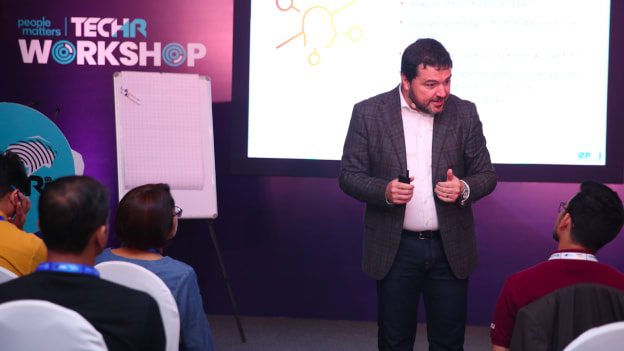Bridging the gap between strategy design and delivery: Insights from a TechHR Workshop

“Nearly 90% of senior executives from around the world admit they fail to achieve all their strategic goals because they don’t implement well,” a study by the Economist Intelligence Unit states.
According to the same survey that reached out to 500 senior executives from companies with annual revenue of $1 billion and more, on average, companies failed to meet 20% of their strategic objectives because of poor implementation.
As part of TechHR India 2019 Workshop series, Ricardo Vargas delivered a session on bridging the gap between strategy and delivery. At a time when conventional business models are being disrupted, business leaders will need to focus and deliver on their strategy. From an employee’s perspective, Vargas noted that the traditional models of work are redundant and the sooner companies move to agile ways of working, the more successful they will be.
While earlier the professionals had a linear trajectory to their career:
Learning -> Skills -> Work
Professionals today have to contend with a cyclical nature of learning:
Learning -> Skills -> Work -> Re-skill -> …
In this context, the ability to adapt is a critical differentiator for businesses.
Ricardo represented the Brightline Initiative – a think tank sponsored by the Project Management Institute. This initiative is focused on providing research and solutions, facilitate networking and to enable capability building on strategy execution.
Brightline’s 10 key principles:
- Acknowledge that strategy delivery is just as important as strategy design
- Accept that you’re accountable for delivering the strategy you designed
- Dedicate and mobilize the right resources
- Leverage insight on customers and competitors
- Be bold, stay focused and keep it as simple as possible
- Promote team engagement and effective cross-business cooperation
- Demonstrate bias toward decision-making and own the decisions you make
- Check ongoing initiatives before committing to new ones
- Develop robust plans but allow for missteps — fail fast to learn fast
- Celebrate success and recognize those who have done good work
Tackling roadblocks and silos
One of the participants in the workshop noted challenges of decision making when a number of people are involved and when decisions are stuck due to multiple layers of approvals. Ricardo noted that the key to resolving such issues is to find the “relevant people” and the right stakeholders involved while making the decisions.
The frozen middle
Another challenge that companies face difficulties is the distance between the senior leadership and delivery. And very often the middle management professionals are only taking orders to execute the strategy. Ricardo noted that the line managers must be engaged as strategy champions and it mustn’t be assumed that people will just “get it”.
CEO's role in execution
The job of the leadership is not just strategy creation. It is to also ensure that the strategy is delivered in the right spirit. When companies don’t pay attention, things will go wrong by themselves. Entropy affects companies that aren’t focused on the strategy delivery.
This article is based on the insights garnered from a workshop at People Matters TechHR India Conference. If you'd like to be a part of such workshops to learn from many experts, be sure to register for TechHR Singapore Conference from Feb.19-21, 2020 at Marina Bay Sands, Singapore.















